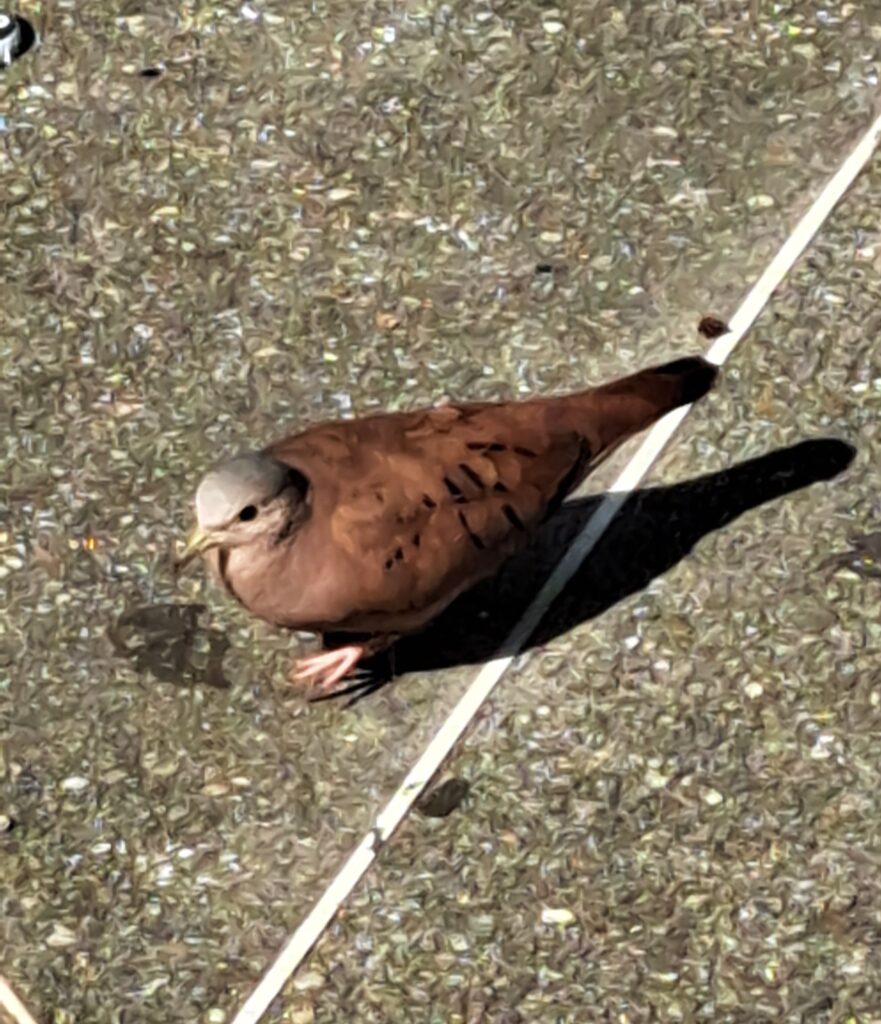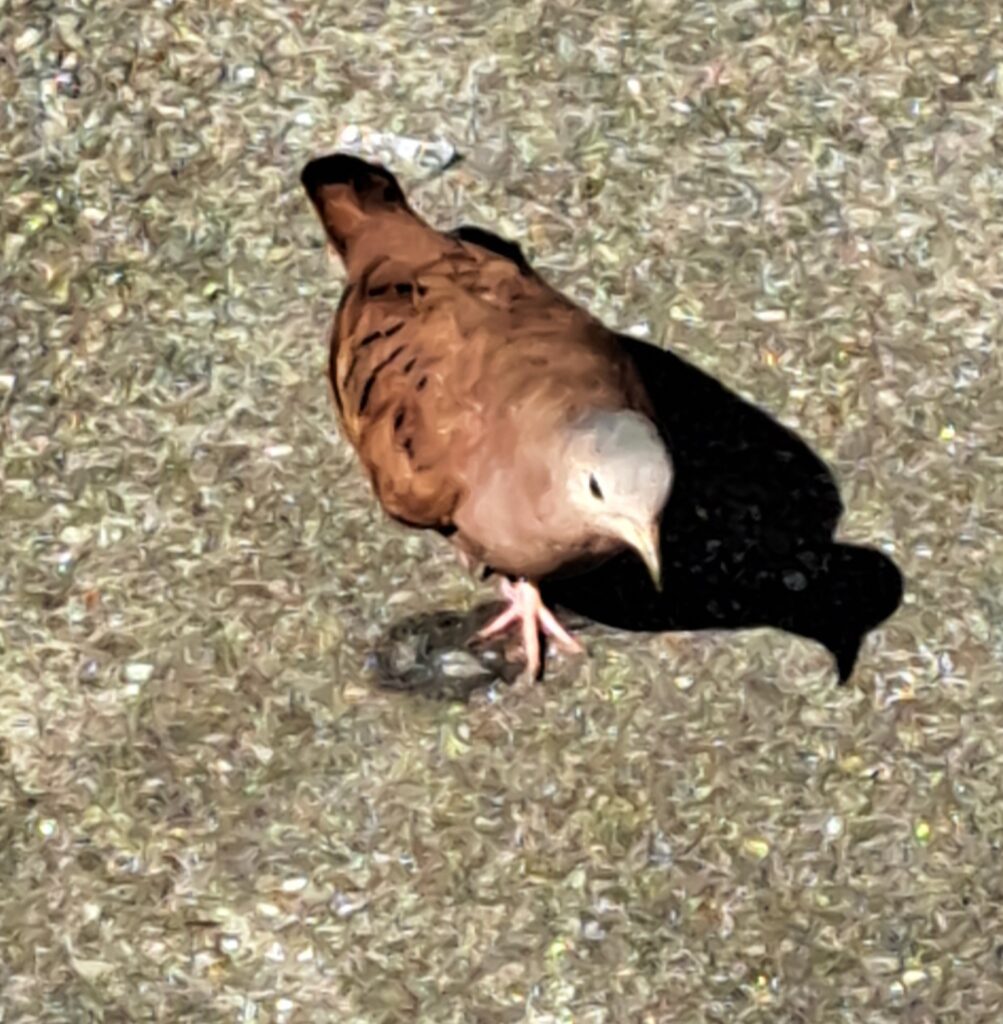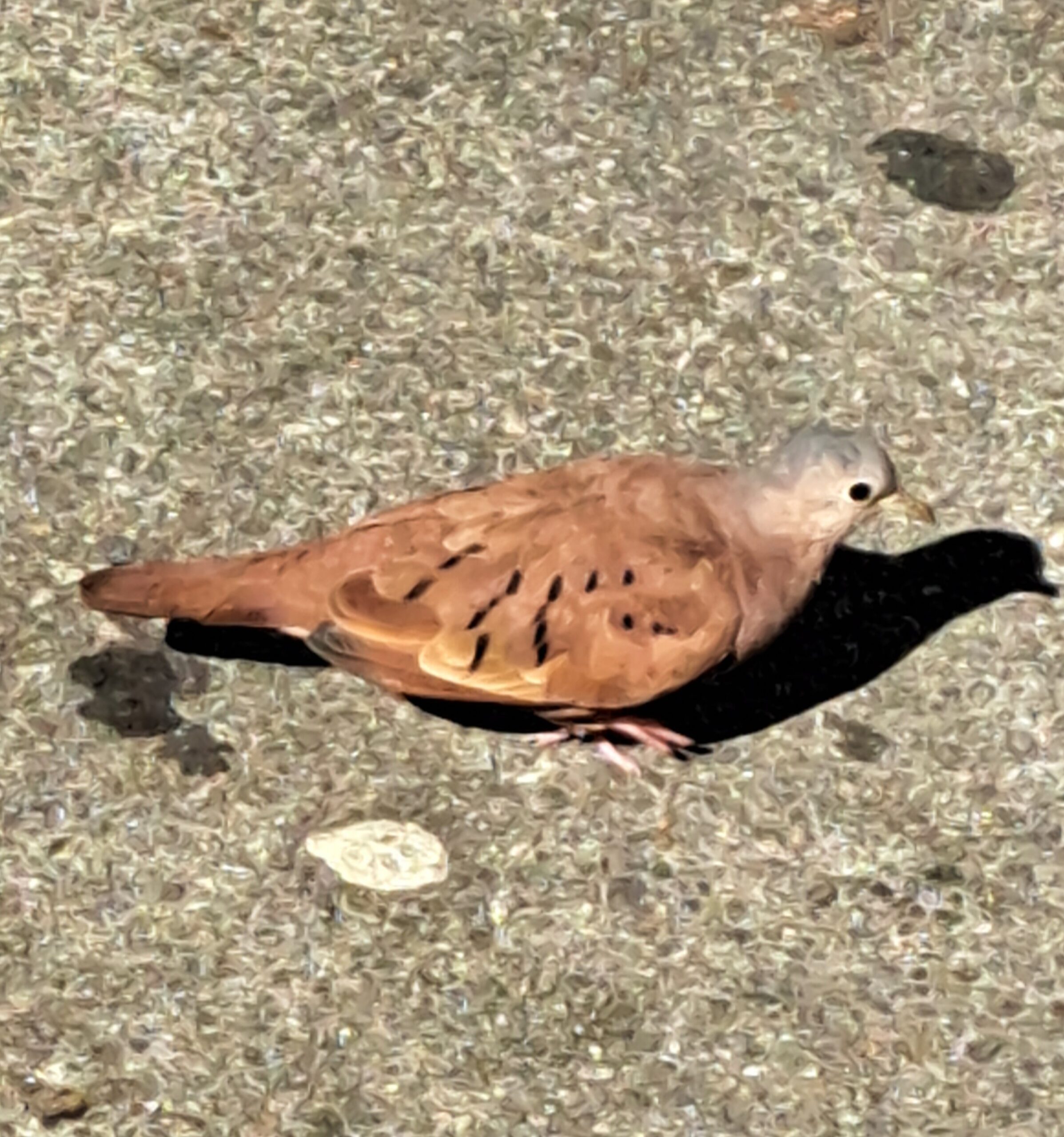La tortolita, columbina colorada, tortolita rojiza o cocochita (Columbina talpacoti) es una pequeña Columbinae de América.
Paseando por las calles de Bucaramanga pude observar bandadas variadas de esta columbiforme. Pude observarla cerca del hombre, pero principalmente abundaban en las zonas verdes, en los parques. Resulta que la cocochita es el ave más abundante dentro del área metropolitana de Bucaramanga (algo que pude comprobar también leyendo algún artículo publicado sobre diversidad de aves en la ciudad, y sus alrededores). Esta es una paloma de cola corta, que mide tan solo 17 cm y cuenta con un peso de unos 47 g. Los machos adultos tienen la cabeza y el cuello gris pálido, con manchas negras debajo de las alas; la cola es negruzca y la parte inferior de las alas es canela y negro. Las hembras son gris oscuro, por lo general coloradas y con menos contraste entre la cabeza y el cuerpo que el macho.




